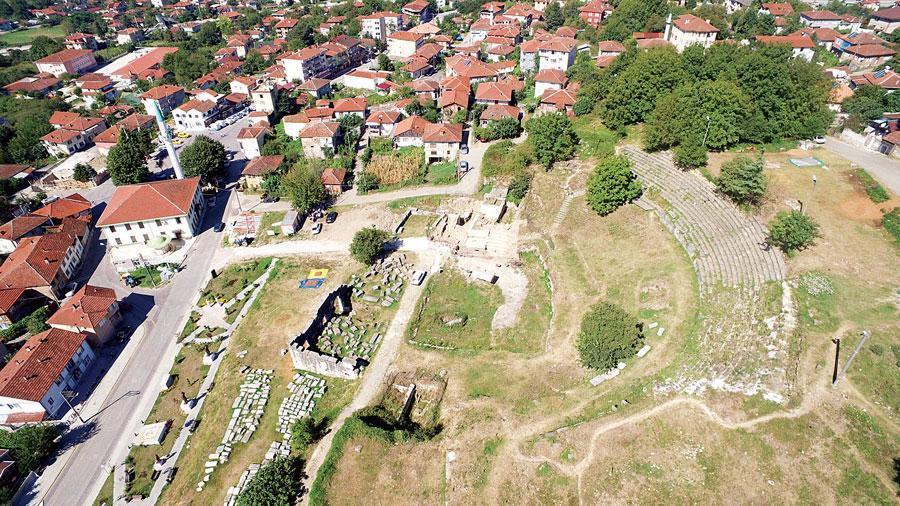
Archaeological excavations in the ancient city of Prusias ad Hypium, which is called the Ephesus of the Western Black Sea, have shed light on the history of the region.
The ancient city, located in the northwestern province of Düzce, is home to structures like an ancient theater, aqueducts and a Roman bridge.
Known as 40 Basamaklar by locals, the 100-meter-long and 74-meter-wide ancient theater’s semicircle sitting field, steps decorated with lion claw figures, vaulted passages and stage are still intact.
Some of the artifacts found in the ancient city are being displayed at a museum, which is located at the entrance of the district and made up of three display rooms, two storages, laboratory and the administrative department.
The museum is home to 6,082 pieces, including 1,789 archaeological and 456 ethnographic artifacts and 3,837 coins.
The archaeology room of the museum displays artifacts from the Bronze Age and the Eastern Roman era as well as potteries, candles, marble statuettes, metal works, jewelries and tomb gifts.
There are also four different coin sections for Greek, Roman, Byzantine and Ottoman era bronze and silver coins.
Speaking to state-run Anadolu Agency, Düzce Culture and Tourism Director Resul Taştan said the only surviving ancient theater in the Western Black Sea region was in Düzce. He said excavations have continued to unearth the theater.
“This theater was built in the Hellenistic era and underwent restorations in the Roman era. It has a capacity of 10,000 people. Excavation works will continue with the collaboration of the museum and Düzce University until the end of the year,” he said.
Taştan said a team of 20 people have taken part in the excavations.
“This is the only surviving theater in this region. Now, works are carried out in a field close to the theater steps. We find different artifacts in every place we dig. Lion claws are found in the steps. These figures reveal how this place was important in its period,” he said.
The academic consultant of the excavations, Düzce University Archaeology Department academic Ahmet Bilir, said the university had been digging the field since 2013. He said that last year, they had unearthed the vomitorium (a covered tunnel through which viewers enter the theater) of the theater and this year, they were working to unearth the entrance on the other side of the theater.
“This year, we have started digging the sitting areas in the lowest part, which we unearthed last year. We try to find the opposite side of the vomitorium to reach the orchestra of the theater. At the same time, we unearth the new steps of the theater,” Bilir said.
He said the field was very important for archaeologists. “We know it was a popular city both in the Hellenistic and Roman eras. Therefore, this place will fill a gap in archaeology. It is also important that the city is located between Ankara and Istanbul. There is no such ancient city in this region. It has a big tourism potential. If we can increase the number of team members, we hope to reach more important results,” said the academic.